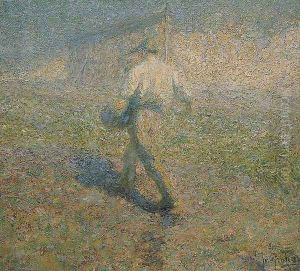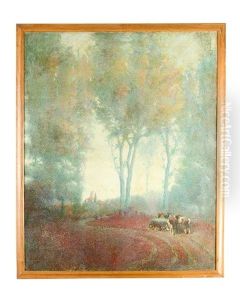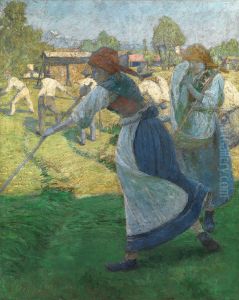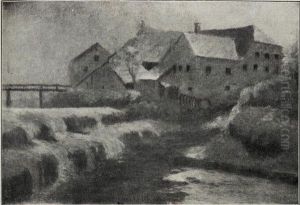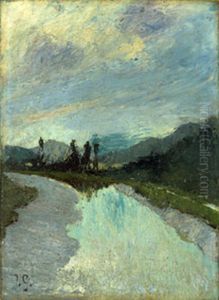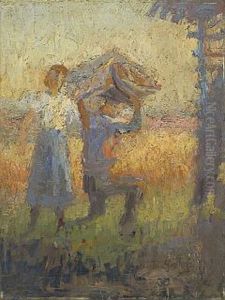Ivan Grohar Paintings
Ivan Grohar was a Slovenian painter and a key figure in the country's artistic life at the turn of the 20th century. He played a significant role in the development of Slovenian art and is one of the foremost representatives of Impressionism in the region. Grohar was born on June 15, 1867, in the small village of Spodnja Sorica in the Austrian Empire (now Slovenia). Coming from a peasant family, he initially trained as a priest but soon abandoned this path to pursue his passion for painting.
Grohar's artistic journey led him to study at the Academy of Fine Arts in Munich, which was a pivotal art center in Europe at the time. His early works were influenced by Realism, but as his style evolved, he became increasingly drawn to the Impressionist movement. This was reflected in his use of light and color, as well as his thematic focus on rural landscapes and the life of Slovenian peasants.
In the early 1900s, Grohar settled in Škofja Loka, where he produced some of his most notable works, including 'The Sower' (Slovene: Sejalec), which has become an iconic image in Slovenian culture. This painting, with its symbolic use of light to represent life force, exemplifies Grohar's mature style and his ability to combine the local environment with broader artistic trends.
Grohar was also an active member of the artistic community and was involved with the Slovene Artistic Society. His work was part of the national awakening and cultural emancipation of the Slovenian people, who were striving for recognition and independence within the Austro-Hungarian Empire.
Despite his success as an artist, Grohar faced financial difficulties throughout his life. He struggled with poor health as well, which hampered his ability to paint in his later years. Ivan Grohar died on April 19, 1911, in Ljubljana, leaving behind a legacy that would influence future generations of Slovenian artists. His work is celebrated for its contribution to Slovenian national identity and the broader narrative of European Impressionism.
